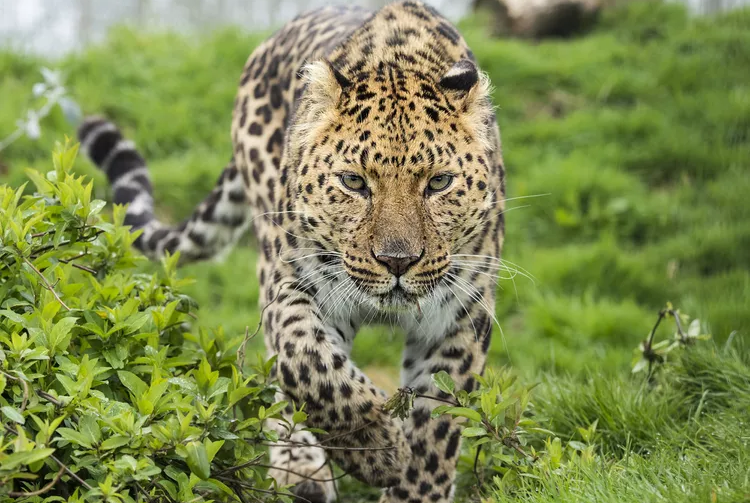Introduction
Red pandas are one of the most charming and mysterious creatures of the animal kingdom. With their striking reddish fur, bushy tails, and adorable faces, they capture the hearts of animal lovers worldwide. Despite their name, red pandas are not closely related to giant pandas but have their own unique place in the tree of life.
In this article, we’ll explore 15 remarkable facts about red pandas that reveal their biology, behavior, and the challenges they face in the wild.
1. Red Pandas Are Not Actually Pandas
Although they share the name, red pandas belong to their own family, Ailuridae, and are more closely related to raccoons and weasels than to giant pandas. This distinct lineage makes them a unique species, often called the “firefox” due to their reddish fur.
2. They Are Native to the Eastern Himalayas
Red pandas inhabit the mountainous forests of Nepal, Bhutan, India, Myanmar, and southern China. They prefer temperate forests with dense bamboo understories at elevations between 5,000 and 13,000 feet.
3. Red Pandas Are Excellent Climbers
With strong, curved claws and flexible ankles, red pandas are adept climbers. They spend much of their time in trees, where they find safety, food, and shelter. Their climbing skills help them escape predators and navigate their forest homes.
4. Bamboo Is Their Main Diet, But They Are Omnivores
Like giant pandas, red pandas eat mostly bamboo leaves and shoots. However, they are omnivores and occasionally eat fruits, acorns, insects, eggs, and small mammals. Their diet varies seasonally and geographically.
5. They Have a “False Thumb”
Red pandas have an extended wrist bone that functions like a thumb. This adaptation helps them grasp bamboo stalks and other food with precision, a feature they share with giant pandas but developed independently.
6. Red Pandas Are Mostly Solitary
Except during mating season or when mothers care for cubs, red pandas are solitary animals. They mark their territory with scent glands and communicate using a variety of vocalizations like squeals, twitters, and huff-quacks.
7. They Are Crepuscular and Nocturnal
Red pandas are most active during dawn, dusk, and at night. During the day, they often rest in tree branches or hollow trunks to conserve energy and avoid predators.
8. Their Thick Fur Keeps Them Warm
The cool, moist mountain forests can be chilly, but red pandas are well adapted with dense, woolly fur that covers their entire body, including the soles of their feet. This insulation helps them stay warm in cold environments.
9. Their Long, Bushy Tails Aid in Balance and Warmth
Red pandas use their long, ringed tails for balance when climbing and as a cozy wrap to protect themselves from cold weather during rest.
10. Females Give Birth to 1-4 Cubs
After a gestation of about 4-5 months, female red pandas give birth to usually one to four cubs. The mothers care for the young in nests made of leaves and branches, often in hollow trees or rock crevices.
11. Cubs Stay with Their Mothers for About a Year
Young red pandas learn essential survival skills from their mothers and stay with them for nearly a year before becoming independent. During this time, they develop climbing, foraging, and predator avoidance techniques.
12. Red Pandas Are Listed as Endangered
According to the IUCN Red List, red pandas are endangered, with an estimated population of fewer than 10,000 mature individuals in the wild. Habitat loss, poaching, and climate change threaten their survival.
13. Conservation Efforts Are Underway
Various organizations, governments, and local communities work together to protect red panda habitats, combat poaching, and promote eco-tourism that benefits both people and wildlife. Captive breeding programs also aim to support population recovery.
14. Red Pandas Have a Unique Place in Culture and Folklore
In their native regions, red pandas hold cultural significance and appear in folklore and traditional stories. Their elusive nature adds to their mystique, inspiring fascination and respect.
15. They Are Surprisingly Adaptable
Despite their specialized diet and habitat, red pandas have shown some adaptability to changing environments. However, continued habitat protection is vital to ensure they thrive in the future.
Conclusion
Red pandas are extraordinary animals with unique adaptations and charming behaviors that make them stand out in the animal kingdom. Their endangered status reminds us of the urgent need to protect biodiversity and preserve the delicate balance of their natural habitats.
By learning about red pandas, we not only deepen our appreciation for these remarkable creatures but also reinforce the importance of conservation efforts worldwide.






Leave a Reply